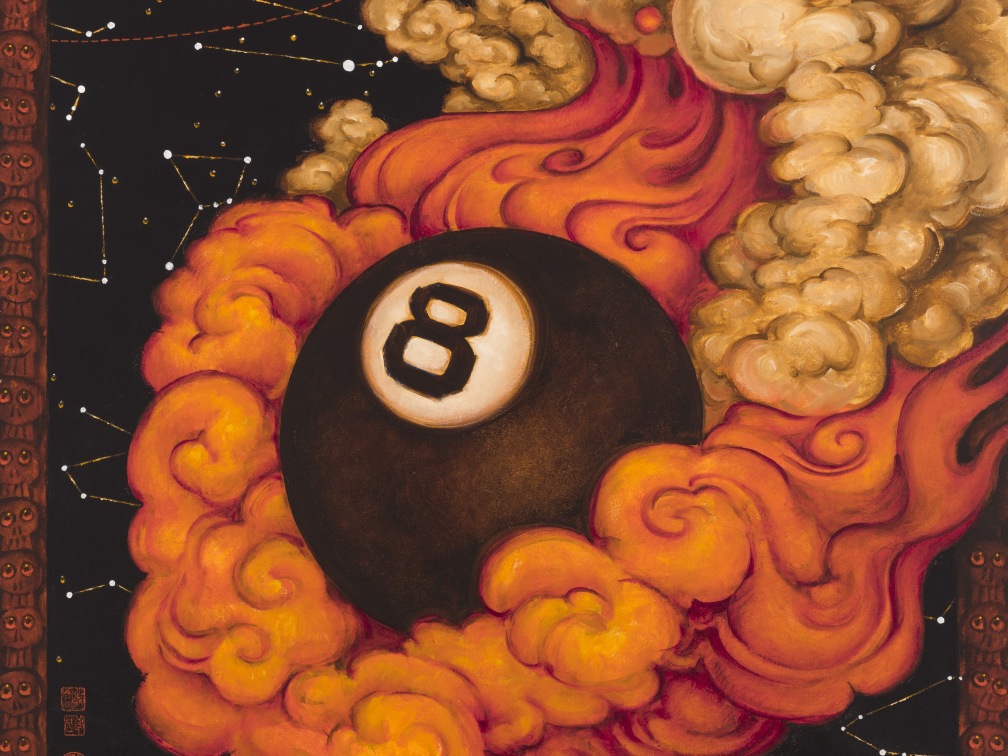
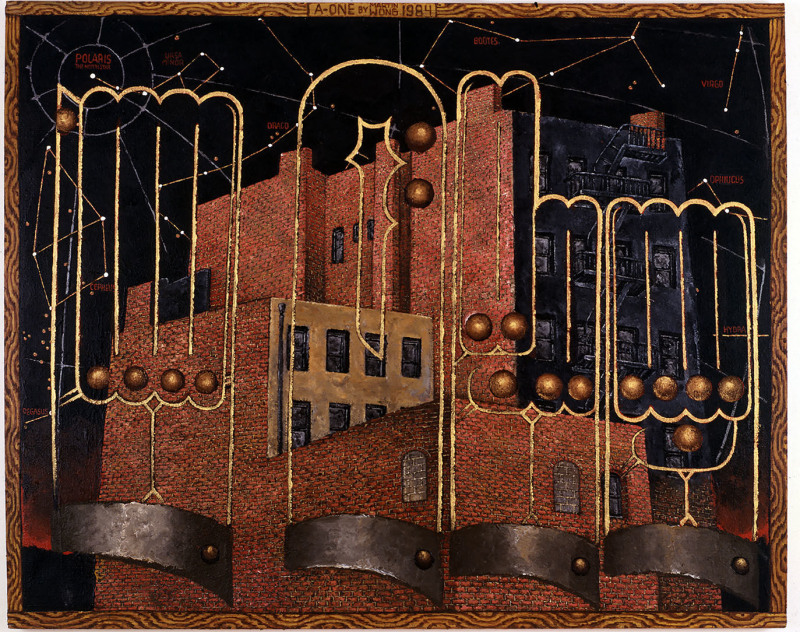
Martin Wong. A-One, 1984. Acrylic on canvas. 48 x 60 in. Courtesy New Museum. Copyright Martin Wong Foundation. Image courtesy of the Martin Wong Foundation and P·P·O·W, New York
A study in personal and artistic resonance, Twilight Child brings together the work of Antonia Kuo (born 1987, New York, New York) and Martin Wong (born 1946, Portland, Oregon; died 1999, San Francisco, California)—two queer diasporic Chinese artists born more than forty years apart. The presentation continues an informal series of intergenerational and “artists’ artists” pairings mounted at the Frye over the last several years.
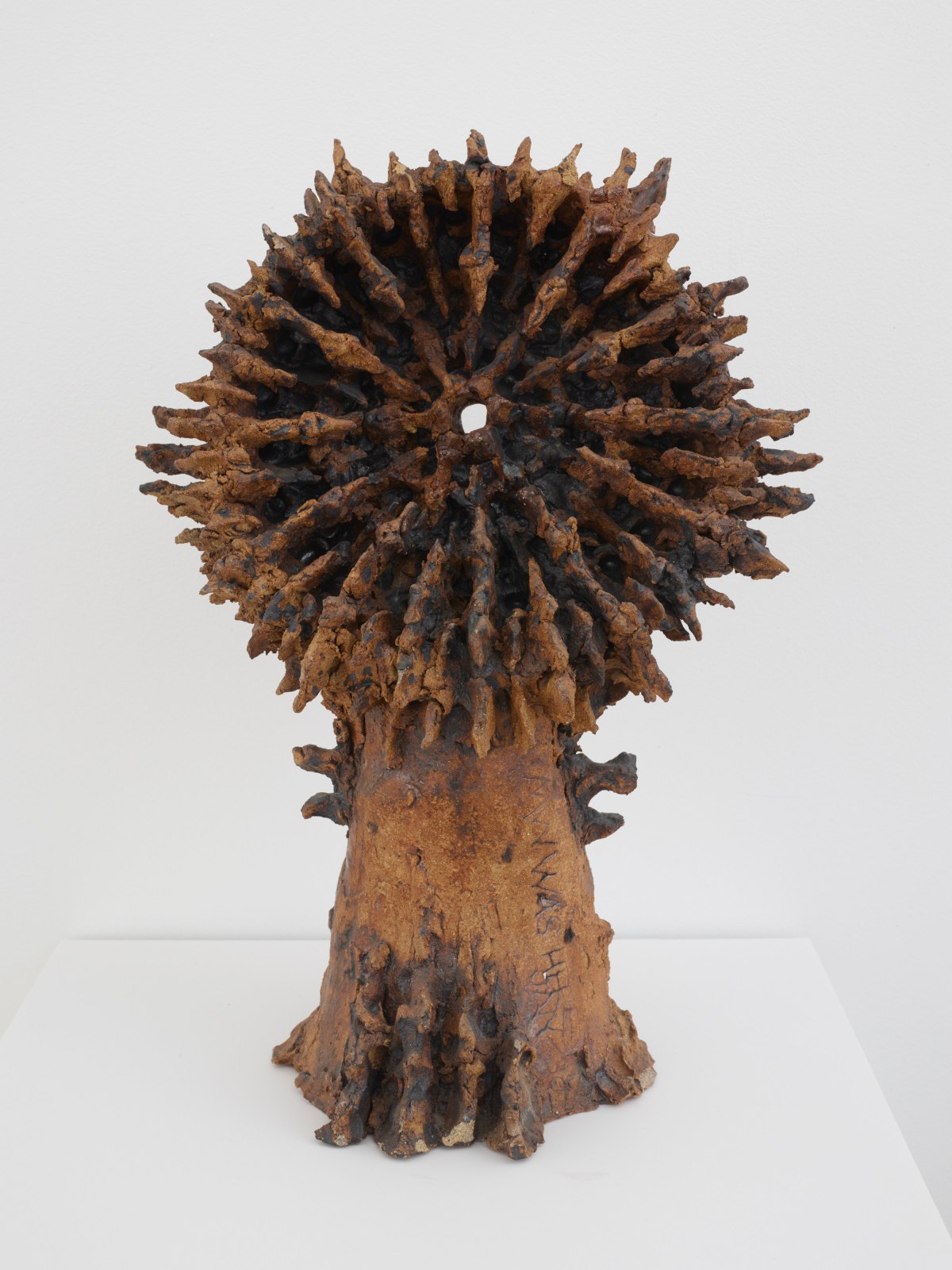
Martin Wong. Untitled (MW Was Here January 23 1970), 1970. Stoneware. 16 x 7 x 12 in. Copyright Martin Wong Foundation. Courtesy of the Martin Wong Foundation and P·P·O·W, New York
Developed in close collaboration with Kuo, the exhibition features Wong’s rarely exhibited biomorphic clay sculptures from the 1960s and 70s, alongside selected paintings and archival materials from across his career. Kuo contributes recent photochemical paintings—including new works created in response to Wong’s poetry—and sculptural objects made at her family’s Seattle-area industrial metal casting company.
Both artists’ works combine the influences of their Chinese heritage, such as traditional shanshui landscape painting, with their contemporary American realities and elements of fantasy. They each incorporate photography in unconventional ways, to stylistically divergent but conceptually related ends. Wong taped together snapshots to compose his claustrophobic trompe l’oeil New York nightscapes of the 1980s, adding astrological constellations and ASL fingerspelling icons to create composite images of multiple signification systems. Kuo likewise achieves a densely patterned, shallow depth of field by superimposing photographs, masking, and painting gesturally with reactive chemicals on light-sensitive paper. Through their respective techniques, the artists underscore processes of translation and confound “straight” legibility.
The layering and hybridity present in the work of each artist suggests the pluralism of multicultural experience, as well as a desire to integrate dualities like chaos and control. For Kuo, it comes from a simultaneous interest in and ambivalence toward expressing cultural identity, “a confusion that can be productive to mine, an element of self that is both familiar and distant.”
Martin Wong
Mammillaria wildii crest, 1997-98
acrylic on canvas
20 x 30 ins.
50.8 x 76.2 cm
Martin Wong
Untitled (Spine Spiral), c. 1970-71
ceramic
15/0 x 11 3/4 x 3 in.
29.85 x 7.62 cm
Martin Wong
Echinocereus tulensis, 1997-98
acrylic on canvas
20 x 30 in.
50.8 x 76.2 cm
Martin Wong
"Mystic Savage Twilight Child", c. 1970
ceramic
8 1/4 x 5 x 1 in.
20.96 x 12.7 x 2.54 cm
Martin Wong
Everything Must Go, 1983
acrylic on canvas
48 x 60 ins.
121.9 x 152.4 cm
Martin Wong
River of Dawn, 1971
ceramic
8 1/2 x 4 3/4 x 3/4 in.
21.59 x 12.7 x 1.91 cm
Martin Wong
Mammillaria wildii crest, 1997-98
acrylic on canvas
20 x 30 ins.
50.8 x 76.2 cm
Martin Wong
Untitled (Spine Spiral), c. 1970-71
ceramic
15/0 x 11 3/4 x 3 in.
29.85 x 7.62 cm
Martin Wong
Echinocereus tulensis, 1997-98
acrylic on canvas
20 x 30 in.
50.8 x 76.2 cm
Martin Wong
"Mystic Savage Twilight Child", c. 1970
ceramic
8 1/4 x 5 x 1 in.
20.96 x 12.7 x 2.54 cm
Martin Wong
Everything Must Go, 1983
acrylic on canvas
48 x 60 ins.
121.9 x 152.4 cm
Martin Wong
River of Dawn, 1971
ceramic
8 1/2 x 4 3/4 x 3/4 in.
21.59 x 12.7 x 1.91 cm
Twilight Child: Antonia Kuo and Martin Wong (Installation View) Frye Art Museum, Seattle, WA June 15 –September 15, 2024. Photo: Jueqian Fang.
Twilight Child: Antonia Kuo and Martin Wong (Installation View) Frye Art Museum, Seattle, WA June 15 –September 15, 2024. Photo: Jueqian Fang.
Twilight Child: Antonia Kuo and Martin Wong (Installation View) Frye Art Museum, Seattle, WA June 15 –September 15, 2024. Photo: Jueqian Fang.
Twilight Child: Antonia Kuo and Martin Wong (Installation View) Frye Art Museum, Seattle, WA June 15 –September 15, 2024. Photo: Jueqian Fang.
Twilight Child: Antonia Kuo and Martin Wong (Installation View) Frye Art Museum, Seattle, WA June 15 –September 15, 2024. Photo: Jueqian Fang.
Twilight Child: Antonia Kuo and Martin Wong (Installation View) Frye Art Museum, Seattle, WA June 15 –September 15, 2024. Photo: Jueqian Fang.
Twilight Child: Antonia Kuo and Martin Wong (Installation View) Frye Art Museum, Seattle, WA June 15 –September 15, 2024. Photo: Jueqian Fang.
Twilight Child: Antonia Kuo and Martin Wong (Installation View) Frye Art Museum, Seattle, WA June 15 –September 15, 2024. Photo: Jueqian Fang.
Twilight Child: Antonia Kuo and Martin Wong (Installation View) Frye Art Museum, Seattle, WA June 15 –September 15, 2024. Photo: Jueqian Fang.
Twilight Child: Antonia Kuo and Martin Wong (Installation View) Frye Art Museum, Seattle, WA June 15 –September 15, 2024. Photo: Jueqian Fang.
Twilight Child: Antonia Kuo and Martin Wong (Installation View) Frye Art Museum, Seattle, WA June 15 –September 15, 2024. Photo: Jueqian Fang.
Twilight Child: Antonia Kuo and Martin Wong (Installation View) Frye Art Museum, Seattle, WA June 15 –September 15, 2024. Photo: Jueqian Fang.
Twilight Child: Antonia Kuo and Martin Wong (Installation View) Frye Art Museum, Seattle, WA June 15 –September 15, 2024. Photo: Jueqian Fang.
Twilight Child: Antonia Kuo and Martin Wong (Installation View) Frye Art Museum, Seattle, WA June 15 –September 15, 2024. Photo: Jueqian Fang.
Twilight Child: Antonia Kuo and Martin Wong (Installation View) Frye Art Museum, Seattle, WA June 15 –September 15, 2024. Photo: Jueqian Fang.
Twilight Child: Antonia Kuo and Martin Wong (Installation View) Frye Art Museum, Seattle, WA June 15 –September 15, 2024. Photo: Jueqian Fang.
Twilight Child: Antonia Kuo and Martin Wong (Installation View) Frye Art Museum, Seattle, WA June 15 –September 15, 2024. Photo: Jueqian Fang.
Twilight Child: Antonia Kuo and Martin Wong (Installation View) Frye Art Museum, Seattle, WA June 15 –September 15, 2024. Photo: Jueqian Fang.
Twilight Child: Antonia Kuo and Martin Wong (Installation View) Frye Art Museum, Seattle, WA June 15 –September 15, 2024. Photo: Jueqian Fang.
Twilight Child: Antonia Kuo and Martin Wong (Installation View) Frye Art Museum, Seattle, WA June 15 –September 15, 2024. Photo: Jueqian Fang.
Twilight Child: Antonia Kuo and Martin Wong (Installation View) Frye Art Museum, Seattle, WA June 15 –September 15, 2024. Photo: Jueqian Fang.
Twilight Child: Antonia Kuo and Martin Wong (Installation View) Frye Art Museum, Seattle, WA June 15 –September 15, 2024. Photo: Jueqian Fang.
Twilight Child: Antonia Kuo and Martin Wong (Installation View) Frye Art Museum, Seattle, WA June 15 –September 15, 2024. Photo: Jueqian Fang.
Twilight Child: Antonia Kuo and Martin Wong (Installation View) Frye Art Museum, Seattle, WA June 15 –September 15, 2024. Photo: Jueqian Fang.
Twilight Child: Antonia Kuo and Martin Wong (Installation View) Frye Art Museum, Seattle, WA June 15 –September 15, 2024. Photo: Jueqian Fang.
Twilight Child: Antonia Kuo and Martin Wong (Installation View) Frye Art Museum, Seattle, WA June 15 –September 15, 2024. Photo: Jueqian Fang.
Twilight Child: Antonia Kuo and Martin Wong (Installation View) Frye Art Museum, Seattle, WA June 15 –September 15, 2024. Photo: Jueqian Fang.
Twilight Child: Antonia Kuo and Martin Wong (Installation View) Frye Art Museum, Seattle, WA June 15 –September 15, 2024. Photo: Jueqian Fang.
Twilight Child: Antonia Kuo and Martin Wong (Installation View) Frye Art Museum, Seattle, WA June 15 –September 15, 2024. Photo: Jueqian Fang.
Twilight Child: Antonia Kuo and Martin Wong (Installation View) Frye Art Museum, Seattle, WA June 15 –September 15, 2024. Photo: Jueqian Fang.
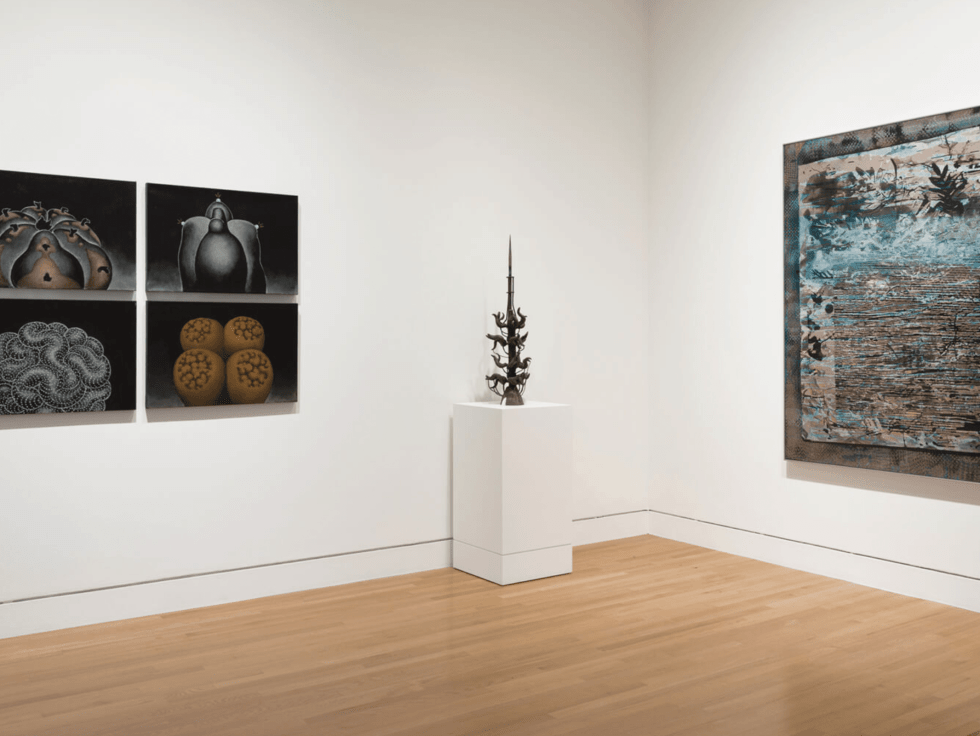
Twilight Child illuminated how both artists interweave influences from their Chinese heritage into their practice.
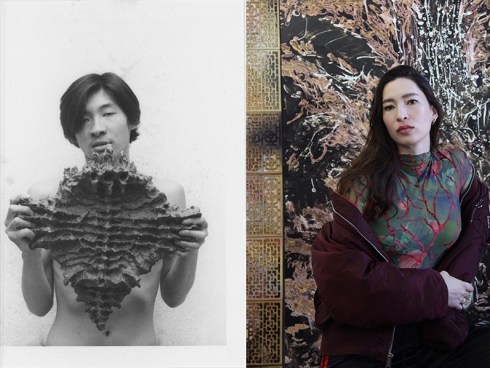
Once in a blue moon I encounter an artist that I fall in love with instantly. Martin Wong is such an artist. And I thank the people who have preserved his work, and memories of his life.
